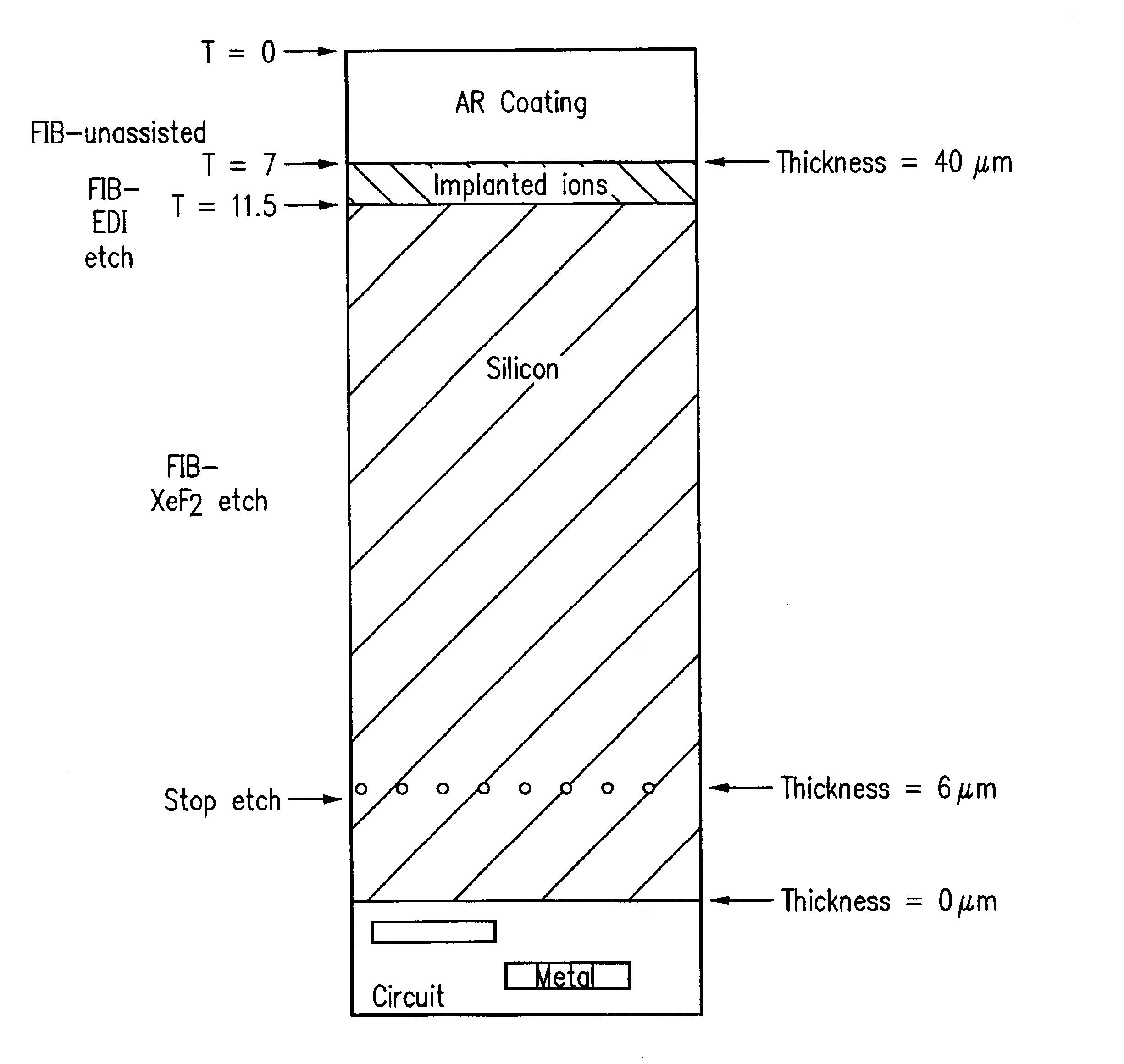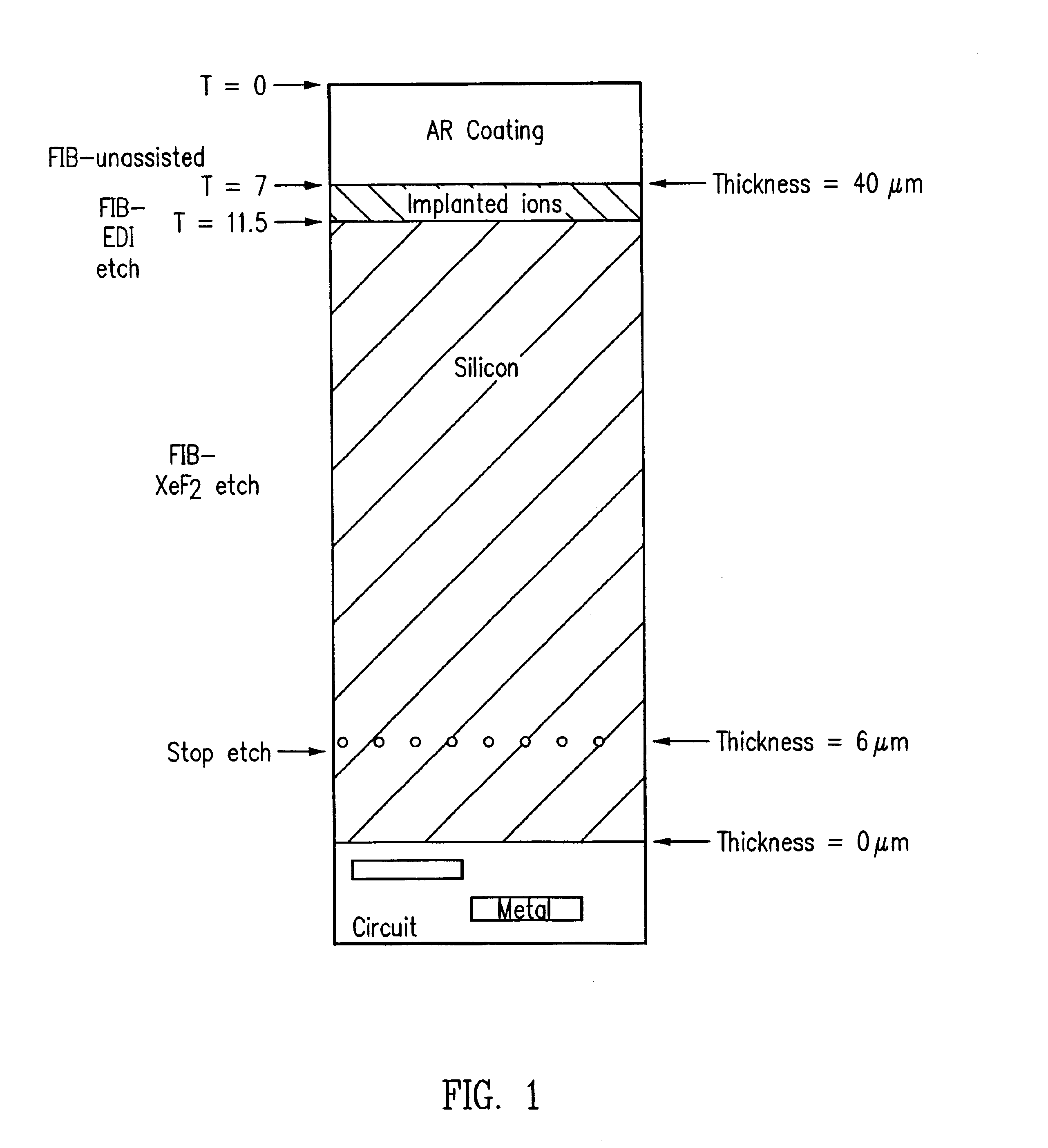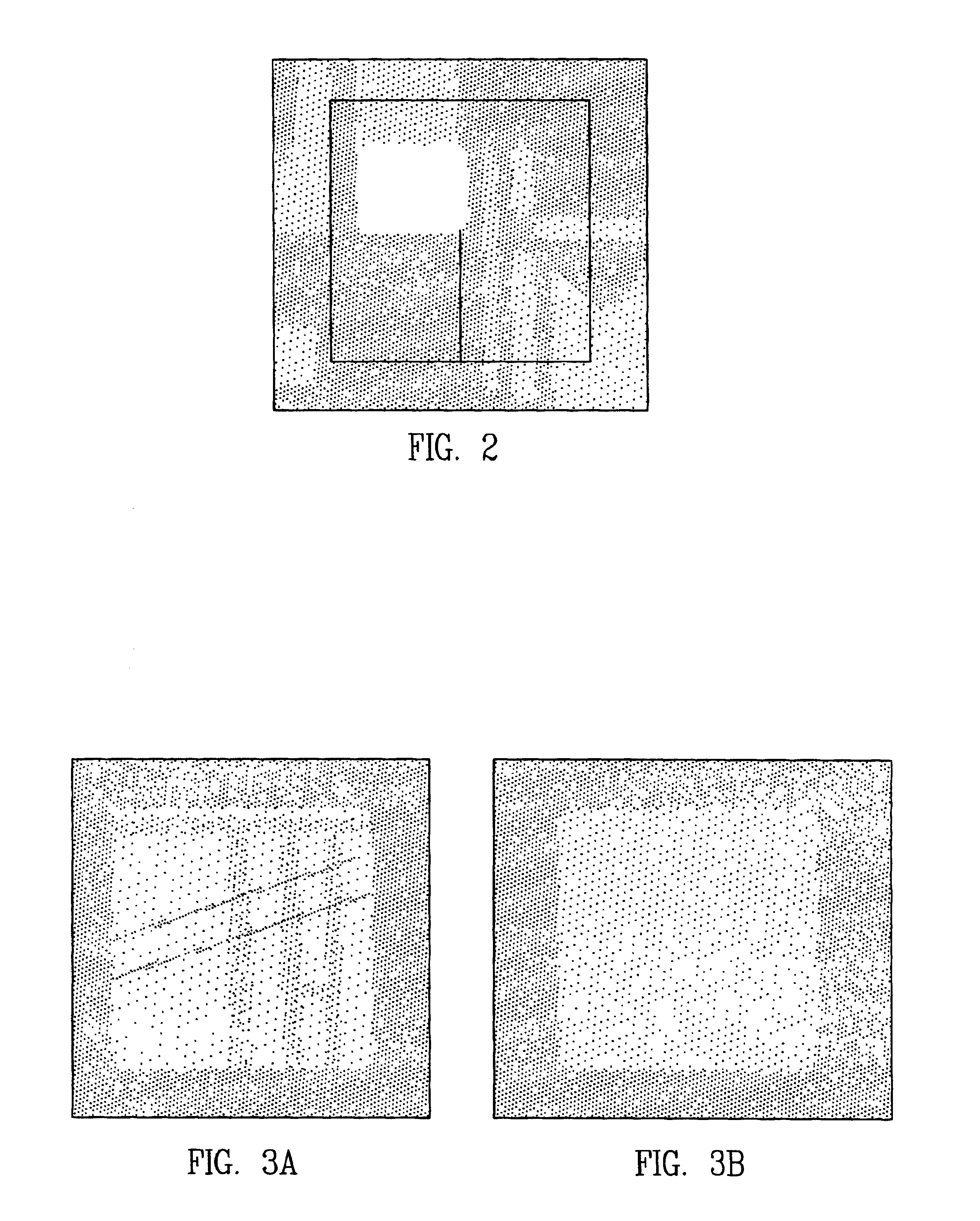Method and apparatus for forming a cavity in a semiconductor substrate using a charged particle beam
a technology of semiconductor substrate and charged particle beam, which is applied in the direction of electrical apparatus, basic electric elements, electric discharge tubes, etc., can solve the problems of large-scale bulk silicon removal that would take too long using the ion beam, large surface defects on the backside of the die surface, and large surface defects, etc., to achieve slow etching and less aggressive
- Summary
- Abstract
- Description
- Claims
- Application Information
AI Technical Summary
Benefits of technology
Problems solved by technology
Method used
Image
Examples
Embodiment Construction
For detail of an FIB apparatus system useful in accordance with this disclosure, see, e.g., U.S. Pat. Nos. 6,225,626 and 5,140,164. Conventional detail of this apparatus and the accompanying well known FIB techniques for forming trenches is not included herein except as shown in FIGS. 6a, 6b. Briefly, however, the FIB tool (apparatus) includes a source of (e.g., gallium) ions, an XY movable stage which moves the FIB column under the integrated circuit under test, a Z stage for adjusting the working distance of the workpiece to the FIB column so as to adjust the focus of the light optical column and for holding the workpiece which is typically an integrated circuit from which the packaging has been at least partly removed (or was never packaged), suitable vacuum enclosures and controls, the FIB column which accelerates and focuses the ions onto the workpiece, and conventional apparatus for injecting “chemistry” gas into the FIB under controlled circumstances to enhance the FIB etchin...
PUM
 Login to view more
Login to view more Abstract
Description
Claims
Application Information
 Login to view more
Login to view more - R&D Engineer
- R&D Manager
- IP Professional
- Industry Leading Data Capabilities
- Powerful AI technology
- Patent DNA Extraction
Browse by: Latest US Patents, China's latest patents, Technical Efficacy Thesaurus, Application Domain, Technology Topic.
© 2024 PatSnap. All rights reserved.Legal|Privacy policy|Modern Slavery Act Transparency Statement|Sitemap



